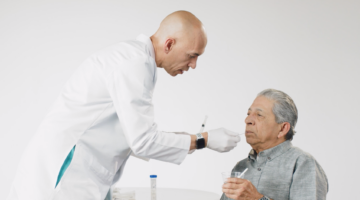
Closing the Gap: Advancing Precision Oncology Through Education and Collaboration
How top-to-bottom collaboration can alleviate hurdles and help increase equitable access to the most effective treatments for all cancer patients.

How top-to-bottom collaboration can alleviate hurdles and help increase equitable access to the most effective treatments for all cancer patients.

Effective diabetes management requires a shift from focusing purely on blood sugar levels and weight management medications to embracing the psychological and biological contributors that drive obesity and the disease.

With evidence generated in minutes, the days of broad-based guidelines will be gone, as researchers and clinicians will have personalized evidence at their fingertips that can transform value-based care.

Through the years, I’ve seen 12 different GI specialists, countless gynecologists, and many other specialists. I’ve had at least 10 surgeries and procedures. Here are three ways to prevent your patients from going through the same thing.

Endoscopy, the standard for detecting esophageal precancer, is quite an invasive procedure — so a lot of people who should be screened end up never being tested. Lucid Diagnostics is trying to solve this problem by selling a quick, office-based diagnostic.

By addressing each community’s unique needs with tailored, culturally responsive care and cross-sector collaboration, we can empower healthcare providers to drive lasting, equitable outcomes.

At a time when AI is reshaping pharma, Reverba Global CEO Cheryl Lubbert explained in an interview why empathy, context, and ethics still require a human touch.

Reducing diagnostic error is a significant part of healthcare organizations’ efforts to improve patient outcomes. By using data to recognize vulnerabilities in the diagnostic process, empowering their diagnostic teams and fostering an environment where every team player understands their vital role organizations can proactively correct the potential root causes of diagnostic errors.

While clinical collaboration platforms have already made a significant impact, there is still much work to be done to ensure that every hospital has the tools and protocols in place to respond to sepsis with the urgency it demands.

Early diagnosis through blood tests buys invaluable time – for patients and their families to plan, seek support, make informed decisions about their difficult care journey and, perhaps most importantly, be together.

Our goal should be to make lymphedema a preventable aspect of cancer survivorship or at a minimum, manageable, rather than a debilitating aftereffect that diminishes patients' quality of life.

I met a mix of biotech and healthtech companies at HLTH affecting everything from drug development, drug efficacy to controlling specialty care costs and managing chronic diseases.

Steps that healthcare providers can take – internally and with the help of external partners – to boost both their security capabilities and the confidence of their clinicians in those capabilities

While VBC opens the door to new care models, they alone cannot solve another key driver of healthcare costs: many people are diagnosed late in their disease progression when care costs are higher.

We should use AI to develop recommendations for breast cancer screening protocols based on quantified risk, factoring in family history, ethnicity, genetics, and density, et al. – and then support the use of powerful new imaging AI technologies for those cases that demand a deeper look.

Investing in reproductive health is not only a strategic financial move but also a moral imperative. By channeling our investment dollars into the critical areas described above, we can support innovative solutions, expand access to essential services, and uphold the fundamental rights of women across the nation.